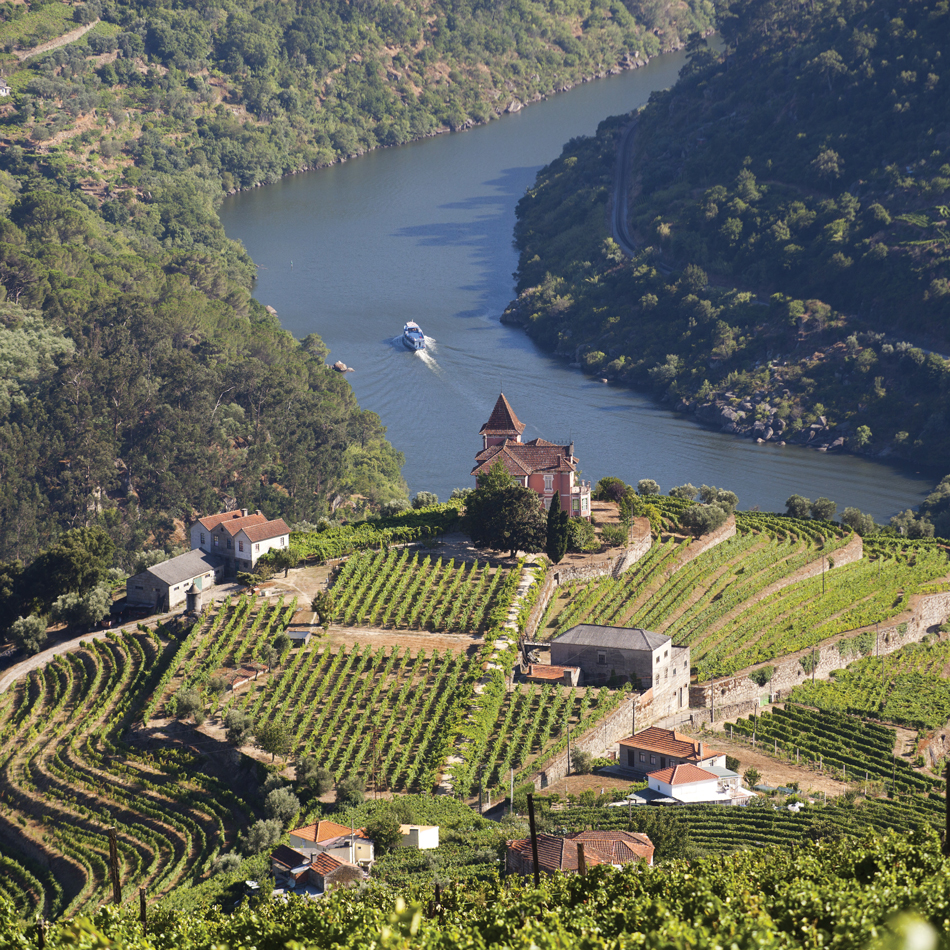Portugal, a popular holiday destination that has something for everyone – including great wines …
A hugely popular destination for Irish holidaymakers, Portugal offers something for everyone. For decades, golfers, late-night revellers, families, couples and everyone in between have been leaving our shores to recharge under the Iberian sun. The delicious local seafood-focused cuisine, of the Algarve in particular, is a cornerstone of the Portuguese experience for travellers, enjoyed with glasses of refreshing local reds or whites. Historically, the reputation of Portuguese wines was built on, and largely limited to, three globally recognised wines – Port, Vinho Verde and Mateus Rosé. Mateus was the global ambassador for Portuguese wines until quite recently.
Portugal currently stands in tenth place in the world for volume of wine produced annually and is home to dozens of fascinating local grape varieties that contribute to the diversity and charm of the wines. Today many of the superb examples of wines produced in Portugal are finally finding their way to Ireland, in our shops, restaurants and wine bars.
In the northwest of the country, the Minho region is home to the largest wine appellation, Vinho Verde. Covering 24,000 hectares of vines, scattered into thousands of small plots, some no larger than private gardens, the region is known for its thirst-quenching, fruit-forward, low-alcohol spritzy white wines grown on granite soils. Unique traditional vineyard management techniques are still being used including “Enforcado”– where vines grow intertwined with trees and “Latada”, a type of pergola that allows the vines to grow high up on supports, not only to keep them away from the soil’s humidity but also to allow the cultivation of other crops beneath the vines. These crisp whites are made from grapes called Alvarinho, Arinto, Avesso, Azal and Trajadura. They are the perfect complement to oysters, shrimp or grilled fish.
If Portuguese wines have not yet made it into your shopping basket, try one or two of the bottles below for your next dinner party.
In the northwest of the country, south of the Transmontano region, lies the Douro Valley – the most famous yet one of the wildest and most rugged areas of Portugal. Demarcated in 1756, the Douro is one of the world’s oldest wine regions and stretches from the Spanish border almost all the way to the city of Porto. Its stunning landscape of terraced vineyards is a UNESCO Heritage site. Highly mountainous, the region is protected from the Atlantic influence by the Serra do Marão. Its extreme climate is described as “nine months of winter and three months of hell”.
The Douro has a rich offering of indigenous grape varieties, growing on old vines and often co-planted. The fortified wines built the reputatation of the region, but the quality of the still wines has been proven repeatedly. Next time you prepare some delicate fish cooked en papillote with olive oil and Mediterranean herbs or a grilled rib of beef, keep them in mind. Further south, in the centre of the country, the Dão has been producing excellent quality wines for many years. Surrounded by mountains and based on very poor granite soils, grapes such as Encruzado, Bical and Cercial for white wines and Alfrocheiro (the “Portuguese Pinot Noir”), Touriga Nacional and Jaen for reds, deliver serious results. The wines can be incredibly complex, savoury and mineral, especially those grown at higher altitude, and show great potential for ageing. Stuffed vegetables or cabrito assado, a traditional local dish of roast young goat, are paired with them.
On the Atlantic coast side of Central Portugal, the region of Bairrada is making plenty of noise with its Baga-based red wines. In the past, Baga was used to produce big, extracted, highly tannic wines, often with long ageing in wood. Today, a talented new generation of producers are changing the expression of the grape to produce more elegant, pure and energetic wines. The region’s claylimestone soil serves the white grapes very well. The best examples age gracefully, taking on some Meursault-like nuances as the years pass.
Lisbon is home to nine Denominação de Origem Controlada, or DOCs. Carcavelos has seen most of its vineyards disappear because of the city expansion. Bucelasis is famous for its fresh, mineral white wines made from the Arinto grape. Influenced by the Atlantic, their saline profile is ideal with seafood. Colares DOC, grown in sand, is a must-try. Minuscule vineyards, tiny production, rare to find, red wines are made from the Ramisco grape, the whites from Malvasia. Note, they generally need ten-15 years ageing in the bottle before opening!
Other regions really deserve a mention too: Tras-O-Montes, Palmela, Setúbal, the Algarve and the Alentejo. (The latter also happens to produce over 50 per cent of the world’s wine corks.) That quality-to-price ratio is what we all want. If Portuguese wines have not yet made it into your shopping basket, try one or two of the bottles below for your next dinner party. @julie_dupouy

Conciso Branco, Dão DOC, Niepoort, €32; www.greenmanwines.ie.

Loureiro, Vinho Verde DOC, Aphros, €25; www.aphros-wine.com

Arinto, Obidos DOC, Quinta Varzea da Pedra, €27; www.h2gwines.ie

Tinto Vinhas Velhas, Dão DOC, Antonio Madeira, €35; www.baggot streetwines.com

Além Tanha, Douro DOC, Quinta Dos Avidahos, €35; www.whelehanswines.ie.





